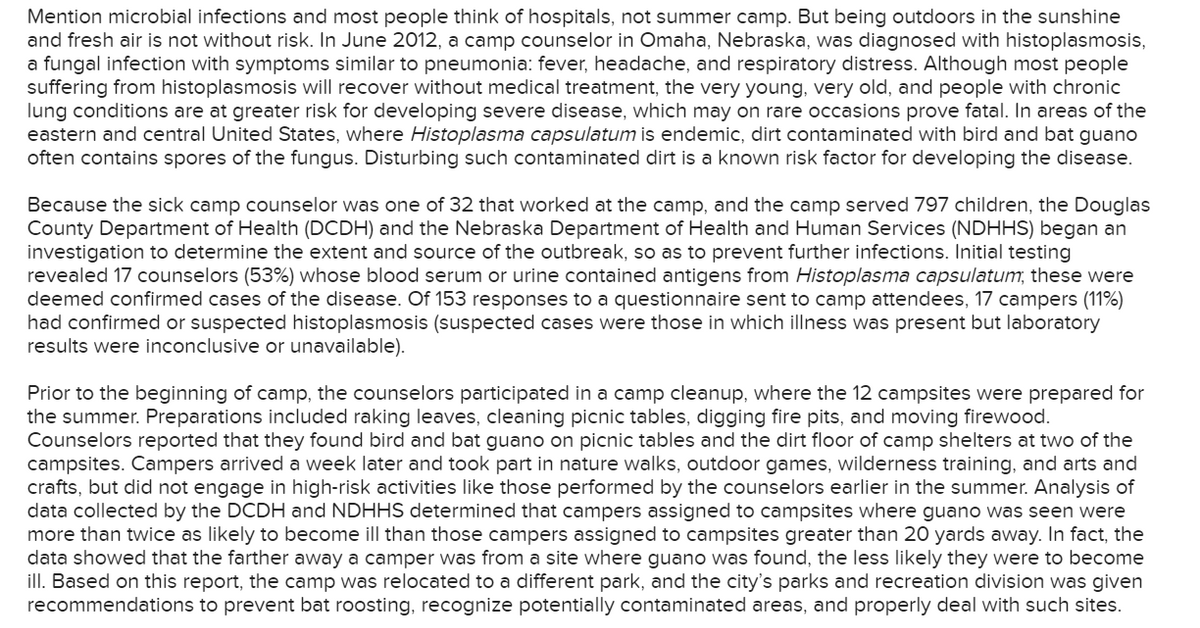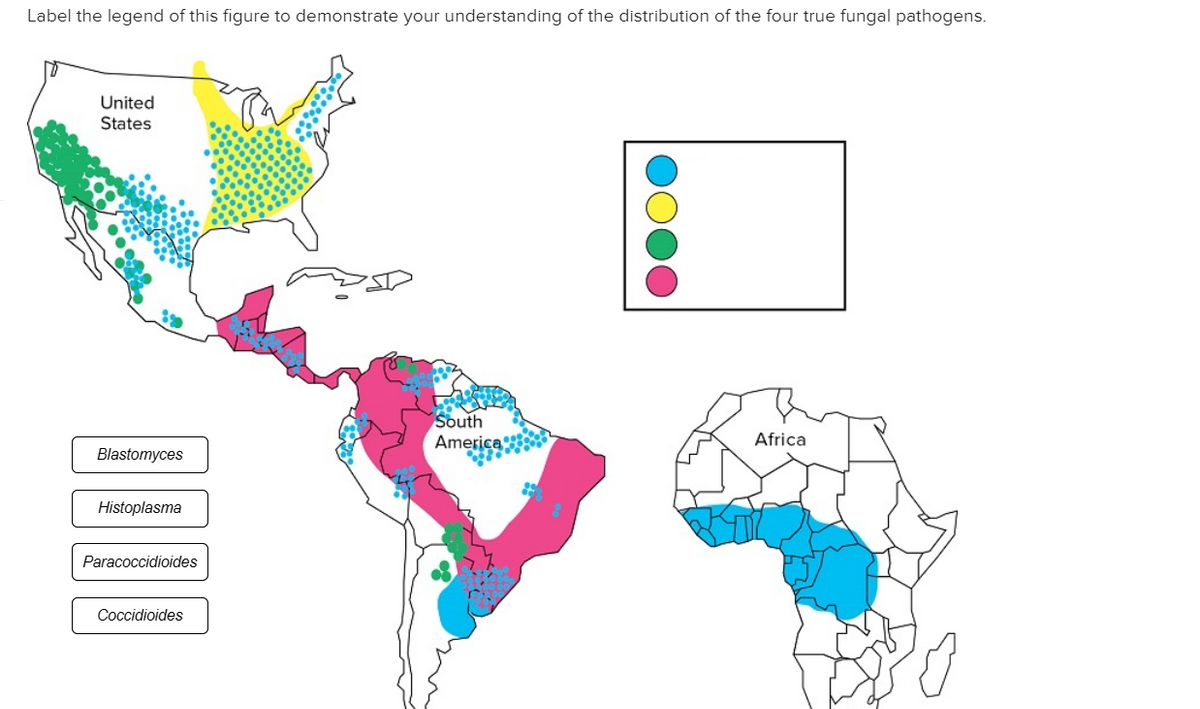Label the legend of this figure to demonstrate your understanding of the distribution of the four true fungal pathogens. United States South America Africa Blastomyces Histoplasma Paracoccidioides Coccidioides
Label the legend of this figure to demonstrate your understanding of the distribution of the four true fungal pathogens. United States South America Africa Blastomyces Histoplasma Paracoccidioides Coccidioides
Basic Clinical Laboratory Techniques 6E
6th Edition
ISBN:9781133893943
Author:ESTRIDGE
Publisher:ESTRIDGE
Chapter7: Basic Clinical Microbiology
Section7.10: Emerging Infectious Diseases
Problem 3RQ
Related questions
Question

Transcribed Image Text:Mention microbial infections and most people think of hospitals, not summer camp. But being outdoors in the sunshine
and fresh air is not without risk. In June 2012, a camp counselor in Omaha, Nebraska, was diagnosed with histoplasmosis,
a fungal infection with symptoms similar to pneumonia: fever, headache, and respiratory distress. Although most people
suffering from histoplasmosis will recover without medical treatment, the very young, very old, and people with chronic
lung conditions are at greater risk for developing severe disease, which may on rare occasions prove fatal. In areas of the
eastern and central United States, where Histoplasma capsulatum is endemic, dirt contaminated with bird and bat guano
often contains spores of the fungus. Disturbing such contaminated dirt is a known risk factor for developing the disease.
Because the sick camp counselor was one of 32 that worked at the camp, and the camp served 797 children, the Douglas
County Department of Health (DCDH) and the Nebraska Department of Health and Human Services (NDHHS) began an
investigation to determine the extent and source of the outbreak, so as to prevent further infections. Initial testing
revealed 17 counselors (53%) whose blood serum or urine contained antigens from Histoplasma capsulatum, these were
deemed confirmed cases of the disease. Of 153 responses to a questionnaire sent to camp attendees, 17 campers (11%)
had confirmed or suspected histoplasmosis (suspected cases were those in which illness was present but laboratory
results were inconclusive or unavailable).
Prior to the beginning of camp, the counselors participated in a camp cleanup, where the 12 campsites were prepared for
the summer. Preparations included raking leaves, cleaning picnic tables, digging fire pits, and moving firewood.
Counselors reported that they found bird and bat guano on picnic tables and the dirt floor of camp shelters at two of the
campsites. Campers arrived a week later and took part in nature walks, outdoor games, wilderness training, and arts and
crafts, but did not engage in high-risk activities like those performed by the counselors earlier in the summer. Analysis of
data collected by the DCDH and NDHHS determined that campers assigned to campsites where guano was seen were
more than twice as likely to become ill than those campers assigned to campsites greater than 20 yards away. In fact, the
data showed that the farther away a camper was from a site where guano was found, the less likely they were to become
ill. Based on this report, the camp was relocated to a different park, and the city's parks and recreation division was given
recommendations to prevent bat roosting, recognize potentially contaminated areas, and properly deal with such sites.

Transcribed Image Text:Label the legend of this figure to demonstrate your understanding of the distribution of the four true fungal pathogens.
United
States
South
America
Africa
Blastomyces
Histoplasma
Paracoccidioides
Coccidioides
Expert Solution
This question has been solved!
Explore an expertly crafted, step-by-step solution for a thorough understanding of key concepts.
This is a popular solution!
Trending now
This is a popular solution!
Step by step
Solved in 3 steps

Knowledge Booster
Learn more about
Need a deep-dive on the concept behind this application? Look no further. Learn more about this topic, biology and related others by exploring similar questions and additional content below.Recommended textbooks for you



